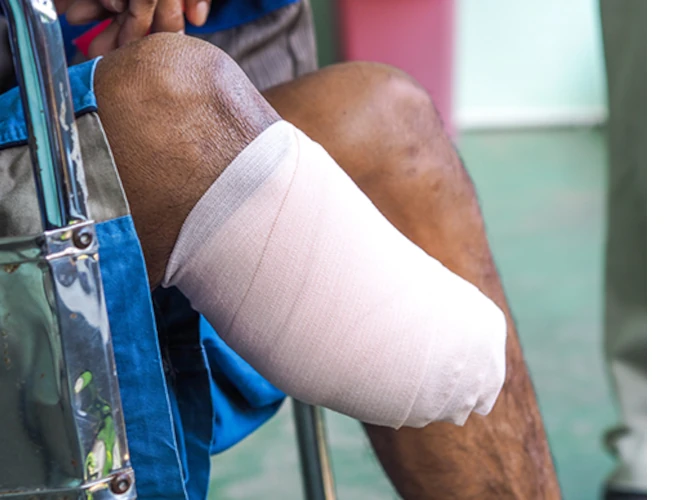
It’s well documented that diabetes, peripheral artery disease (PAD), and other vascular diseases are the leading cause of limb loss in the United States. We also know that the burden of vascular-related amputation isn’t shared equally among all Americans. A study published earlier this year by the American Diabetes Association found an elevated risk of limb loss in the “Diabetes Belt,” which covers much of Appalachia and the Southeast. Other recent investigations have found that amputation rates are three times higher among Black Americans than the national average, twice as high among Latinos, and vastly more common among economically distressed communities.
The US healthcare system has finally, belatedly started taking concrete steps to reduce the number of preventable amputations nationwide, especially among the most vulnerable populations. Some of those efforts have been calling extra attention to themselves during November, which is National Diabetes Month.
Amputation Prevention Alliance
Six weeks ago, the American Diabetes Association (ADA) announced the creation of the Amputation Prevention Alliance, a three-year campaign that’s focused on lowering limb loss among communities facing disproportionately high rates of amputations and amputated-related mortality. Created in partnership with Podimetrics, Advanced Oxygen Therapy, and other healthcare organizations, the Alliance has set its sights on pursuing policy changes, raising clinician awareness, and educating patients so they can self-advocate for better care.
Save Legs Change Lives
Earlier this year, Jannsen Pharmaceutical Companies (a subsidiary of Johnson & Johnson) launched its multi-year Save Legs, Change Lives initiative. Since its unveiling in March, Save Legs Change Lives has rolled out more than 12 separate programs to raise awareness about peripheral artery disease among Black Americans. For example, the campaign’s mobile Empower-PAD team has administered more than 3,000 PAD screenings in at-risk communities across the country. It has partnered with churches, local media outlets, and other neighborhood organizations to spread the word about PAD’s hazards and share resources for early detection and intervention. The campaign is also sponsoring Community Health Advocate Trainings (CHAT), which prepares community health workers to practice grassroots advocacy and education surrounding PAD.
Caring Access Patient Assistance Program
ProgenaCare, which manufactures an innovative keratin-based wound care product, will be providing its product free to low-income patients throughout National Diabetes Month. Intended to to dramatically broaden access to advanced wound care treatments, the program will make ProgenaCare’s signature product, ProgenaMatrix, available at no cost to patients who are unable to afford it. CaringAccess is specifically focused on the roughly 33 percent of Americans who are uninsured or underinsured, including Medicaid recipients. Our only complaint with this program is that you have to send in the application via fax.
lmagine You Preventing Type 2
The National Association of Chronic Disease Directors (NACDD) has teamed up with the Centers for Disease Control and ABC/Disney on a series of videos intended to educate at-risk Americans about healthy lifestyle habits that can prevent or delay the onset of type 2 diabetes. Based on the CDC’s National Diabetes Prevention Program, the video series features real-life stories that illustrate how Americans can take better charge of their own health and dramatically cut their risk of developing type 2 diabetes.